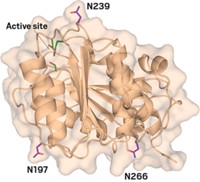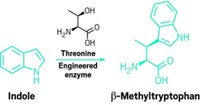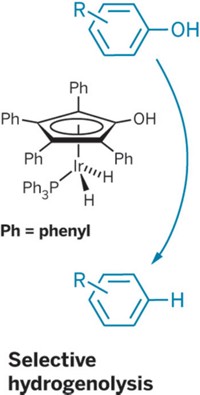Advertisement
Grab your lab coat. Let's get started
Welcome!
Welcome!
Create an account below to get 6 C&EN articles per month, receive newsletters and more - all free.
It seems this is your first time logging in online. Please enter the following information to continue.
As an ACS member you automatically get access to this site. All we need is few more details to create your reading experience.
Not you? Sign in with a different account.
Not you? Sign in with a different account.
ERROR 1
ERROR 1
ERROR 2
ERROR 2
ERROR 2
ERROR 2
ERROR 2
Password and Confirm password must match.
If you have an ACS member number, please enter it here so we can link this account to your membership. (optional)
ERROR 2
ACS values your privacy. By submitting your information, you are gaining access to C&EN and subscribing to our weekly newsletter. We use the information you provide to make your reading experience better, and we will never sell your data to third party members.
Synthesis
Plastics Created From Yeast-Made Monomers
ACS Meeting News: With genetic engineering, chemists coax yeast into making ω-hydroxy fatty acids for producing degradable polymers
by Bethany Halford
April 4, 2011
| A version of this story appeared in
Volume 89, Issue 14
Thanks to some clever genetic engineering, chemists have developed a method to produce ω-hydroxy fatty acid monomers from yeast and turn the compounds into polymers with promising properties. Poly(ω-hydroxy fatty acids) are plastic materials with properties similar to polyethylene. But given their ester linkages, they can be easily broken down and recycled. Making the monomers via chemical synthesis, however, is prohibitively expensive. Richard A. Gross of Polytechnic Institute of New York University described how his team has genetically engineered the diploid yeast Candida tropicalis to produce commercially viable yields of ω-hydroxy fatty acids (J. Am. Chem. Soc., DOI: 10.1021/ja107707v). The yeast had previously been engineered to turn fatty acids into α,ω-diacids by oxidizing the terminal methyl group of the fatty acid chain into a carboxylic acid. Gross’s team reasoned that by eliminating the right enzymes they might be able to halt this oxidation at the alcohol stage, thereby producing ω-hydroxy fatty acids. In all, the researchers eliminated 16 genes encoding six cytochrome P450s, four fatty alcohol oxidases, and six alcohol dehydrogenases from the C. tropicalis genome. The resulting monomers were then made into poly(ω-hydroxy fatty acids), polymers with properties that fall between those of high-density and low-density polyethylene, Gross said.





Join the conversation
Contact the reporter
Submit a Letter to the Editor for publication
Engage with us on Twitter